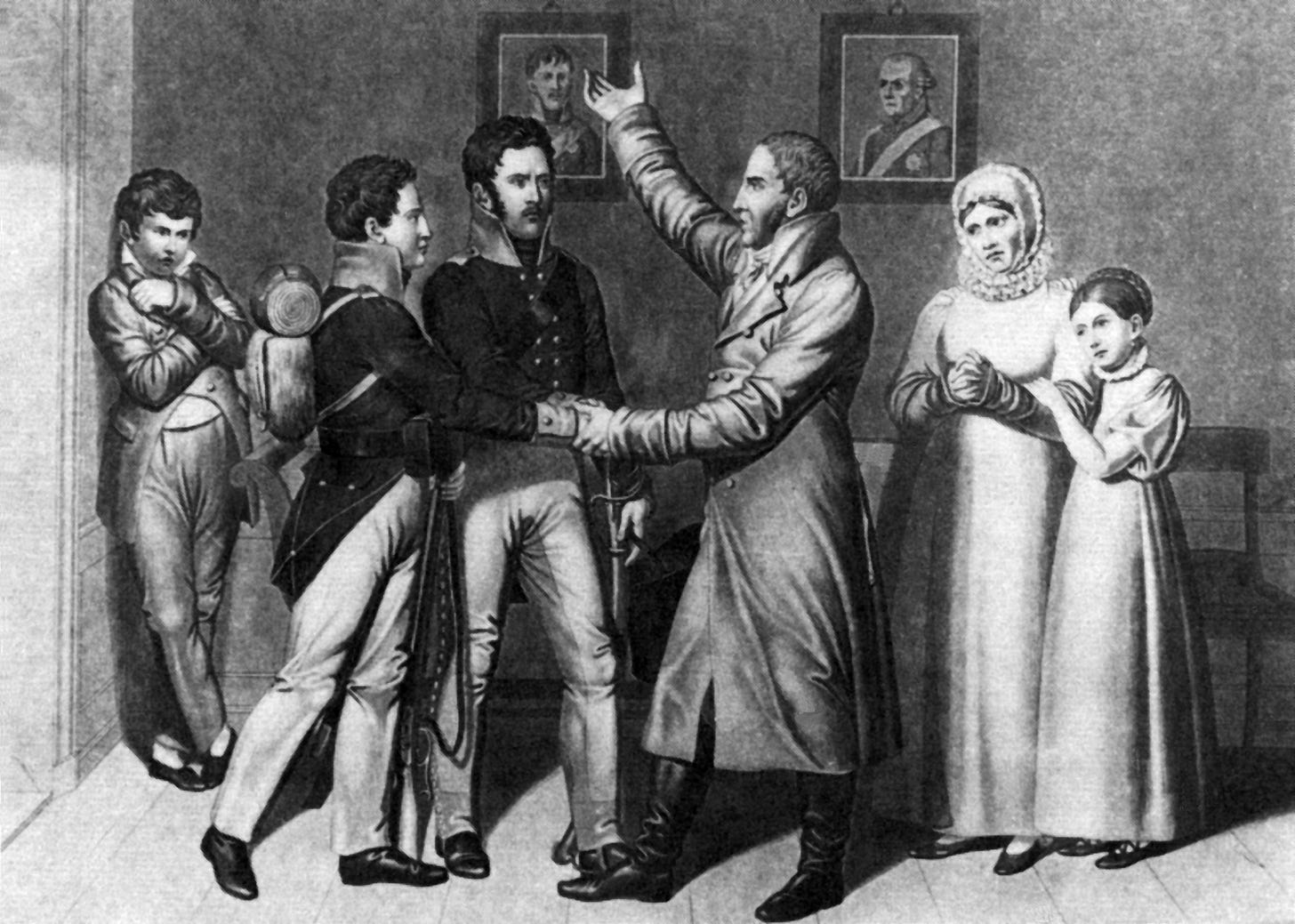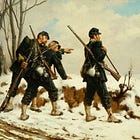In the years following the battle of Jena-Auerstadt, the tactical lessons taught by the French infantry on the field, and the achievements of the Jäger in the days that followed, made a powerful impression on the leadership of the Prussian Army. In particular, it convinced them to both increase the number of light troops and incorporate skirmishing into the training of the line infantry.
Because of their unique source of recruitment, the Jäger units proper could not easily expand. Large scale augmentation was available, however, in the many volunteer Jäger units that had been formed on local initiative. Composed of young men of the educated middle class, detachments of volunteer Jäger attached themselves to almost every regiment of the Prussian regular army. Needless to say, the degree to which these young enthusiasts approached the virtuosity of their professional namesakes must have varied greatly. Nonetheless, it is significant that those Prussians fortunate enough to be able to determine the terms of their service chose overwhelmingly to imitate an obscure band of drably-dressed foresters rather than the famous Potsdam grenadiers. Even those volunteers who could afford a horse, and thus serve with the cavalry, styled themselves as Jäger .
Notwithstanding the Jäger enthusiasm of the War of Liberation, the bulk of the Prussian infantry never became, or even played at becoming, Jäger. The light troops - all the men of the Schützen and the Füsilier battalions, as well as the third rank of each line battalion - came closest to imitating the Jäger. Like Jäger they employed aimed fire, moved in open order, and depended heavily on the initiative and sense of honor of the individual soldier to keep up the volume of fire and the momentum of the attack. Unlike the rifle-toting Jäger, all but a handful of the Schützen and fusiliers carried smoothbore muskets.
Sources:
Peter Hofschröer Prussian Light Infantry, 1792-1815 (London: Osprey, 1984)
Curt Jany Geschichte der Preußischen Armee vom 15. Jahrhundert bis 1914 (Osnabruck: Biblio Verlag, 1967)
Paul Pietsch Die Formations und Uniformierungs-Geschichte des preußischen Heeres 1808-1914 (Hamburg: Verlag Helmut Gerhard Schulz, 1963)
The link will take you to the website of Osprey Publishing.
For Further Reading:





